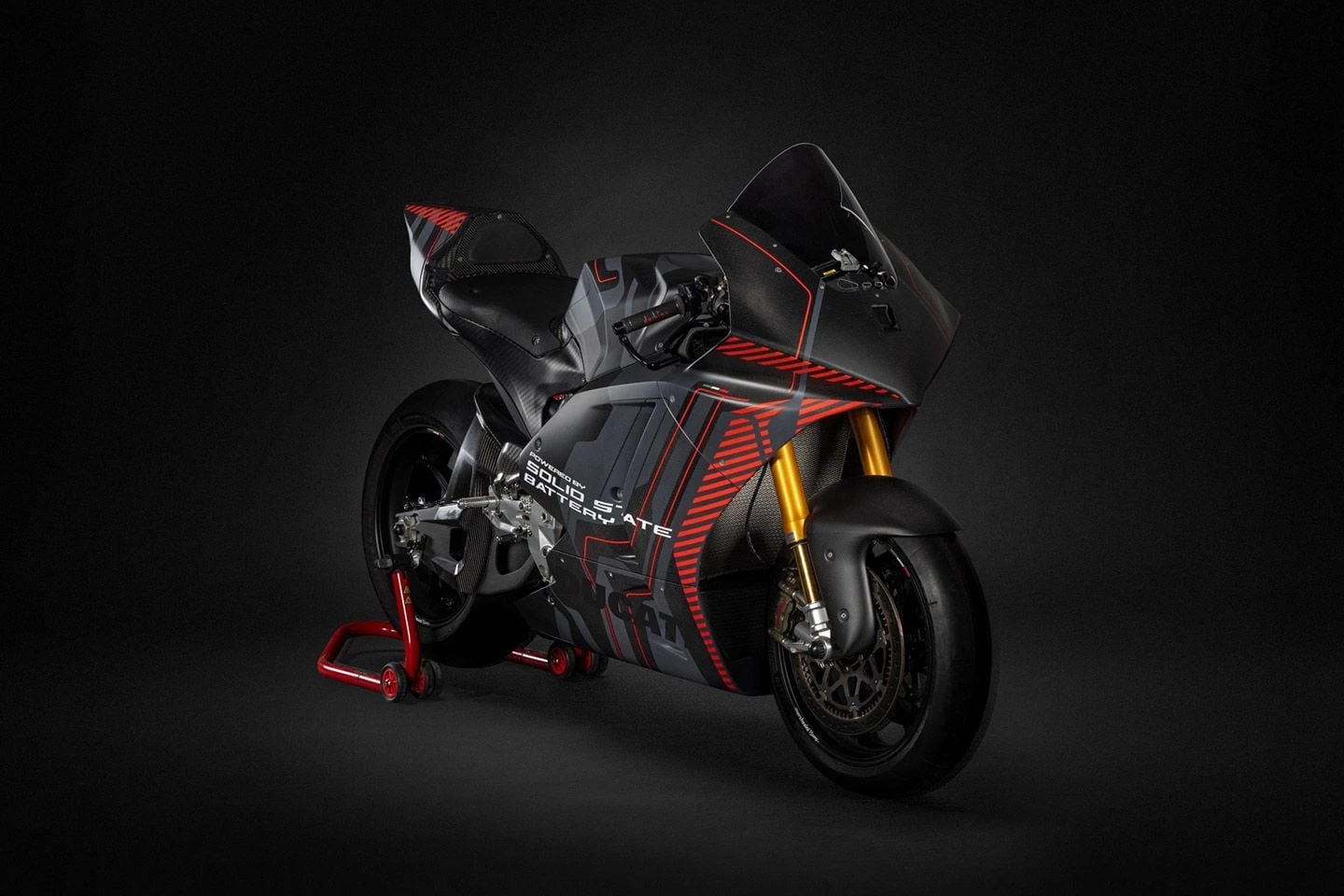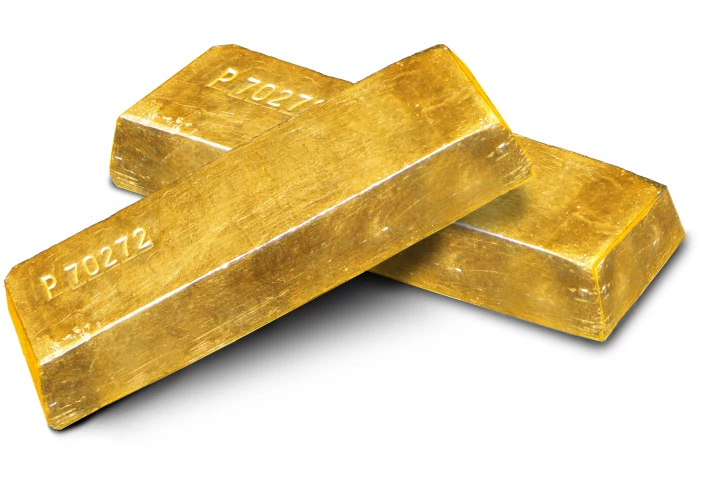The IAA Mobility trade show in Munich was bound to throw some really unusual motos our way. But most wouldn't have put their money on the first Volkswagen vehicle to run on a solid-state lithium-metal battery to be a Ducati.
But here we are; the Ducati V21L MotoE prototype, developed in collaboration with QuantumScape and PowerCo, will serve as the lab rat for VW's solid-state battery-electric offerings of the future.
As if it weren't already one of the most impressive electric motorcycles on the planet, producing 150 horsepower in its stock form and capable of reaching speeds of up to 170 mph (recorded on the Mugello Circuit), incorporating solid-state technology into a motorcycle proves a point.
That point is that it can be done, and the technology is almost there. I say ‘almost’ because scaling solid-state tech remains a roadblock for many manufacturers, including Toyota and Honda, which have been working on it for a while now.
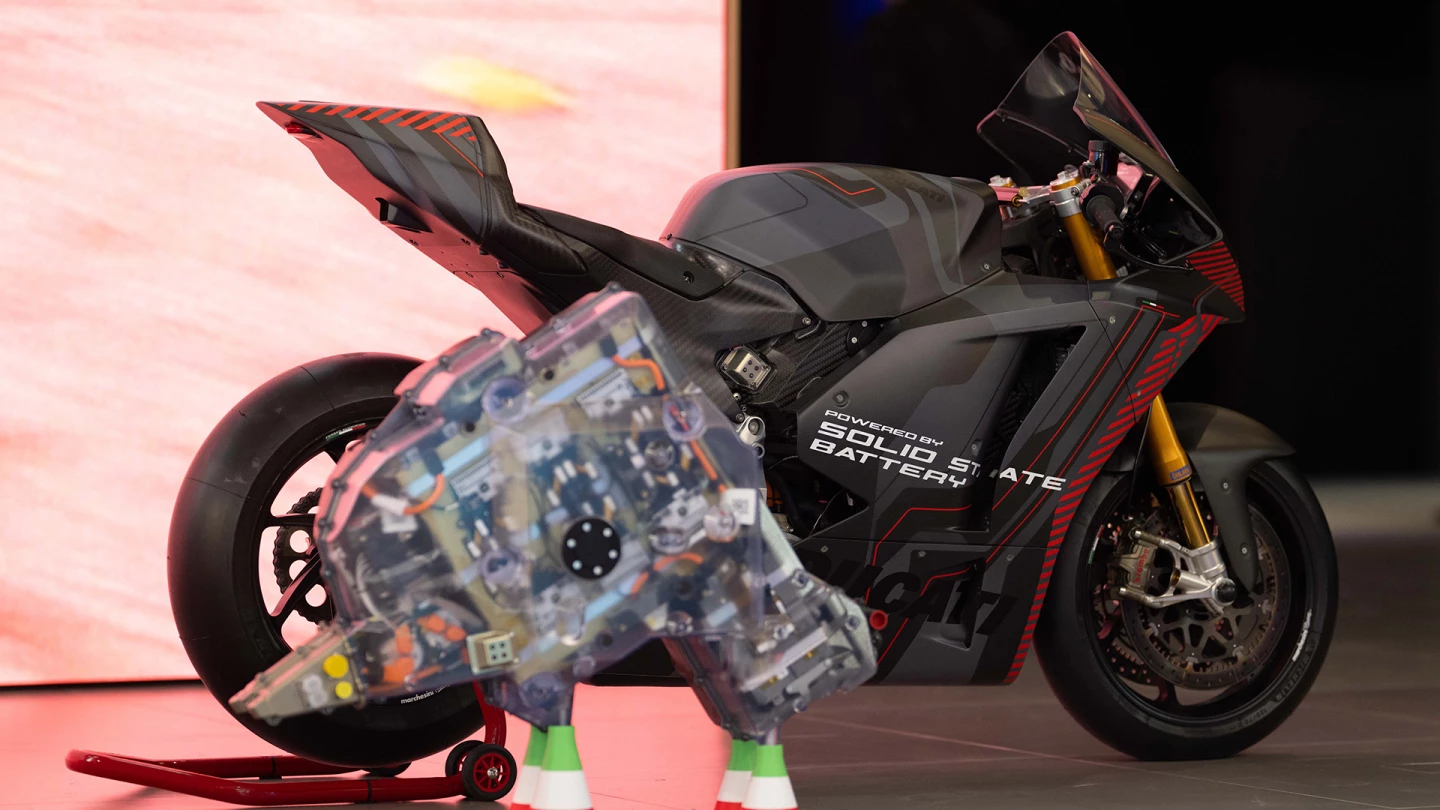
But with the likes of MG already having showcased the tech on its production-ready crossover hatchback, we’re sitting at a pivotal moment in the electric vehicle (EV) revolution. Perhaps VW chose a motorcycle to showcase its solid-state tech might be because motorcycles are a simpler and safer platform on which to build such prototypes.
Audi, Ducati, PowerCo, and QuantumScape are all companies that have collaborated in this effort. These are all Volkswagen AG brands, other than PowerCo. The Salzgitter, Germany-based business was established in California in 2010, with the goal of commercializing solid-state batteries, and has long served as VW’s battery cell producer.
“Today we’ve crossed the threshold from possibility to reality,” said Siva Sivaram, CEO of QuantumScape. "We believe that our partnership with PowerCo, together with Ducati as our demonstration launch partner, positions us to scale our transformative technology to gigawatt-hour production. Our world-leading battery innovation, combined with Ducati’s uncompromising craftsmanship and legendary commitment to performance, will help usher in a new era of electrified transportation."
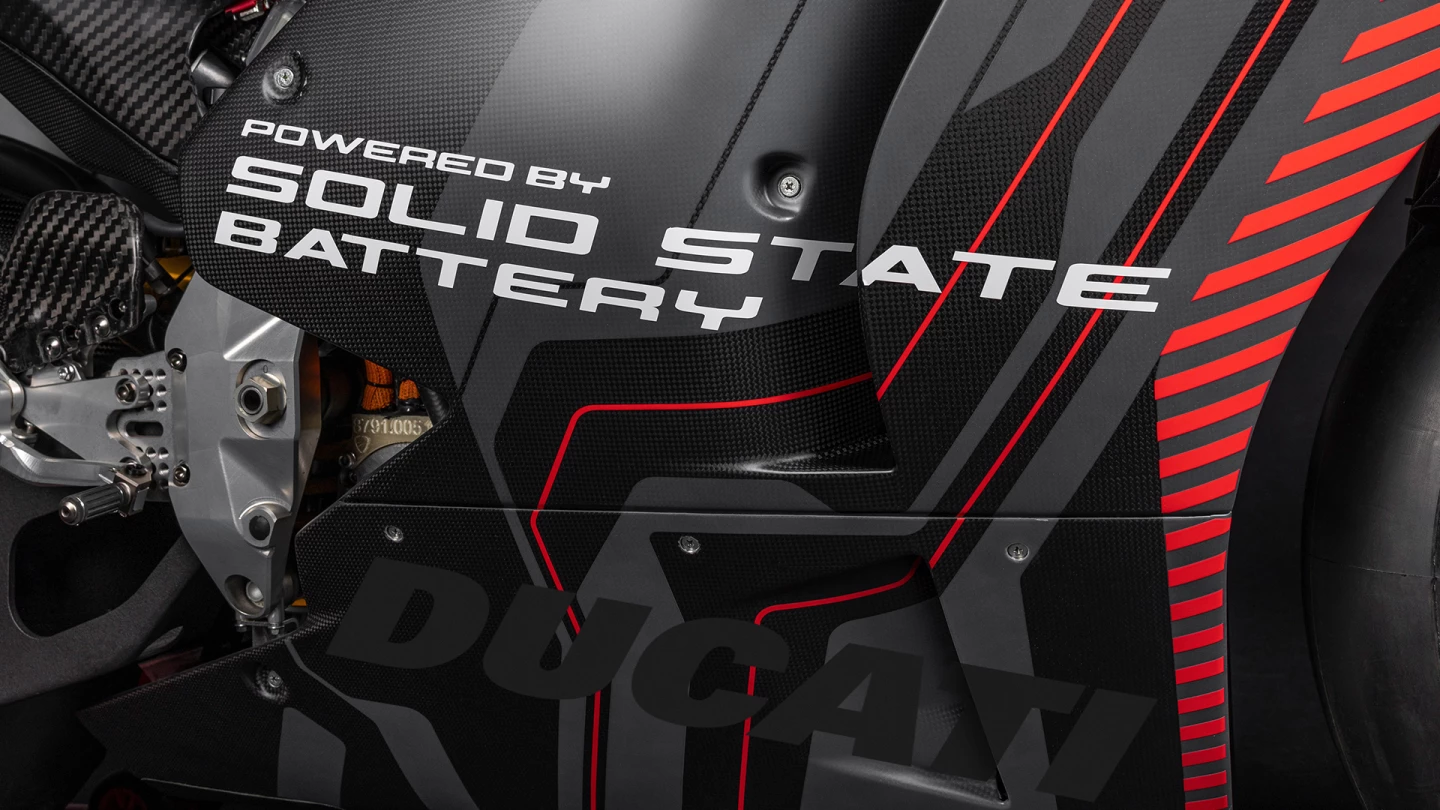
As you may already know, solid-state batteries employ a solid electrolyte and anode-free lithium-metal instead of liquid electrolytes and graphite anodes in more conventional batteries. This means they're not just safer to use overall, but also enable quicker charging, and they store more energy per a given volume and weight.
On the V21L prototype, the battery stores about 844 watt-hours per liter, and can deal with race-level power outputs as well as a hot charger that'll fill 'er up from 10–80% in little more than 12 minutes. The pack comprises 980 of QuantumScape’s QSE-5 cells, which use a lithium-metal anode and a ceramic separator in place of the stock bike's 18-kWh battery pack that’s equipped with 1,152 cylindrical 21700 cells.
A race bike with a lighter battery pack, consistent torque, and battery cooling should see quicker lap times on track. And faster charge times should also mean quicker pit stops.
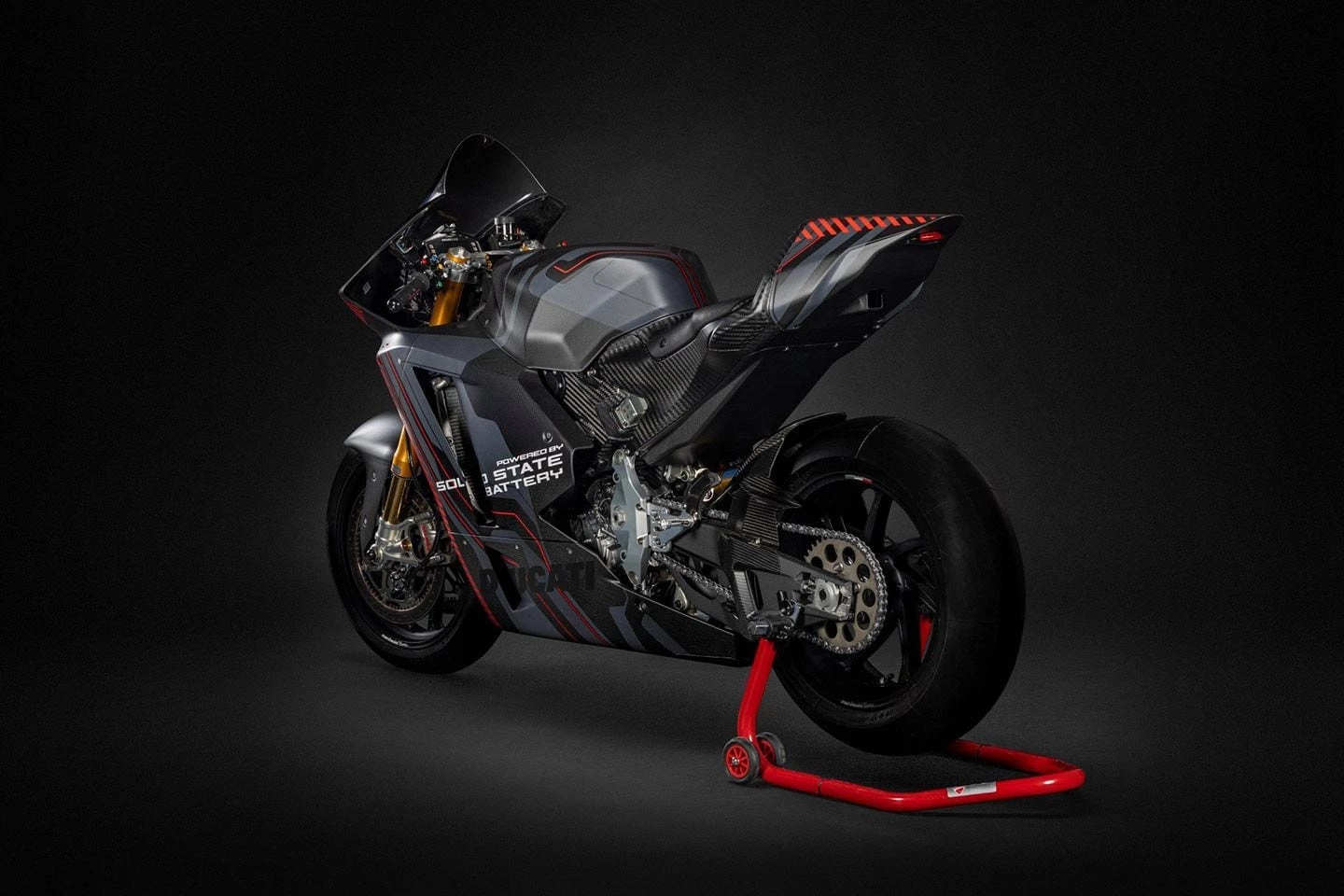
But perhaps more important when it comes to real world use, solid state batteries should have longer life cycles because their cells are less prone to deterioration. That, in my opinion, would be the single biggest unique selling point when this tech trickles into mainstream automotive manufacture.
This marks the first instance that a QuantumScape solid-state lithium-metal battery has powered an actual electric vehicle, and we could already be looking at the beginnings of a battery that can be used in production bikes if the company’s innovative "Cobra" separator method scales as promised.
PowerCo and QuantumScape have revealed plans to develop a commercial version of the solid-state battery by the end of this decade. But I have to admit, we’d much likely see it on four wheels than two for much of the early phases, and that’s because the car market is much bigger than motorcycles.
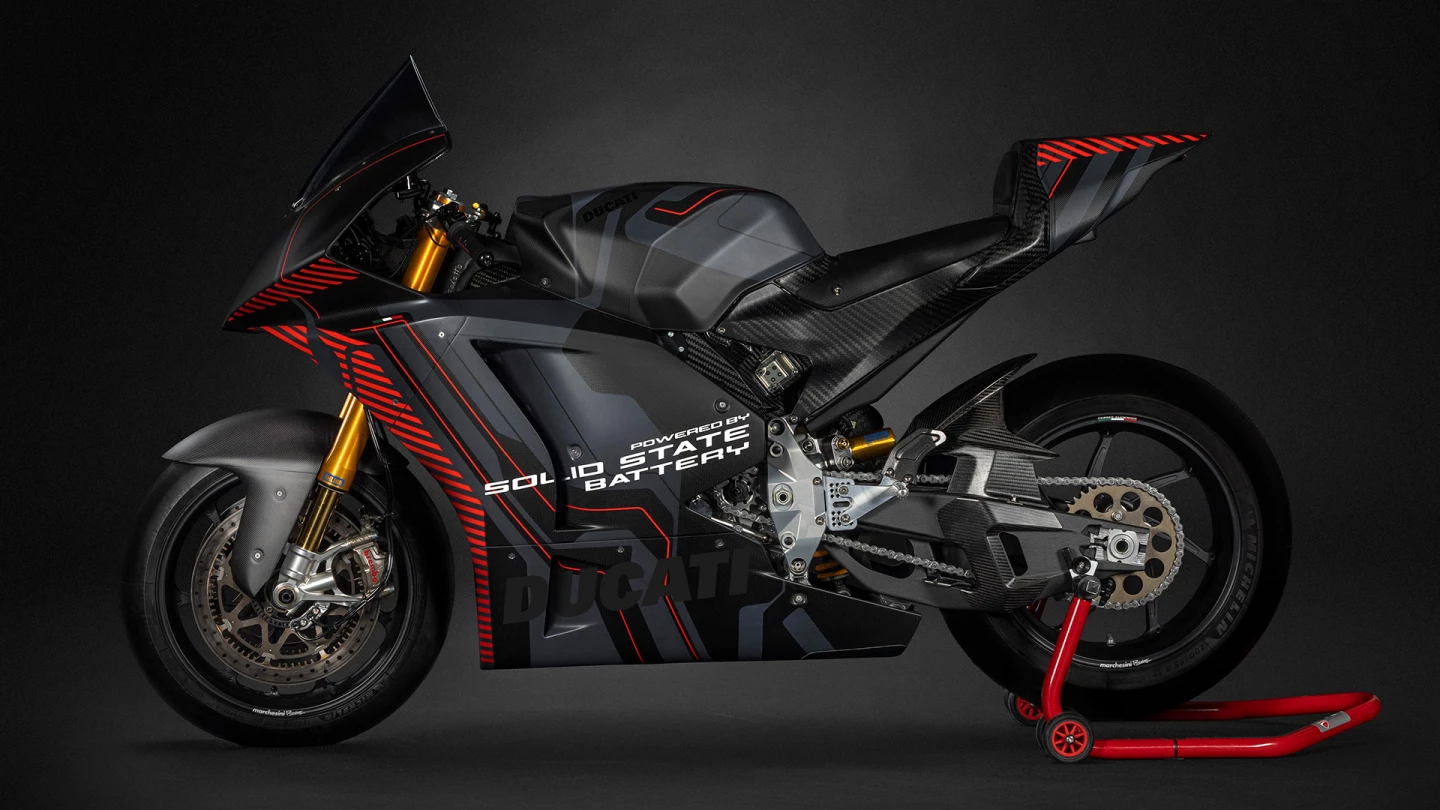
As for the prototype bike, it will be further developed for on-track testing as the project continues to progress. But the decision to develop the cells in a Ducati is a clear indication that motorcycles will inevitably stand to benefit when mass production of affordable solid-state batteries is underway.
Sources: QuantumScape, Ducati

